WILMINGTON, Delaware, AUGUST 18, 2022 – Maron Marvel Bradley Anderson & Tardy is proud to announce that 24 of its attorneys were selected by their peers for inclusion in the 2023 edition of The Best Lawyers in America®, one of the legal profession’s oldest and most respected peer-review publications, and one attorney was named among The Best Lawyers in America: Ones to Watch.
Maron Marvel’s recognized attorneys were drawn from the firm’s offices nationwide. Attorneys were recognized for their work in the practice areas of mass tort litigation/class actions, personal injury, product liability, environmental, and commercial litigation on behalf of defendants.
Maron Marvel congratulates the following lawyers on being named among the 2023 Best Lawyers in America:
Kimberly P. Mangum Ridgeland, MS | Mass Tort Litigation / Class Actions – Defendants |
Chan E. McLeod Ridgeland, MS | Mass Tort Litigation / Class Actions – Defendants |
Christi G. Jones | Mass Tort Litigation / Class Actions – Defendants |
Colleen S. Welch | Mass Tort Litigation / Class Actions – Defendants Personal Injury Litigation – Defendants Product Liability Litigation – Defendants |
Donald C. Partridge | Mass Tort Litigation / Class Actions – Defendants Product Liability Litigation – Defendants |
George L. Inabinet Jr. | Mass Tort Litigation / Class Actions – Defendants Product Liability Litigation – Defendants |
Howard E. Jarvis Knoxville, TN | Litigation – Environmental Personal Injury Litigation – Defendants Product Liability Litigation – Defendants |
John C. McCants III Ridgeland, MS | Mass Tort Litigation / Class Actions – Defendants Product Liability Litigation – Defendants |
John G. Gaul | Personal Injury Litigation – Defendants |
John R. Robinson | Personal Injury Litigation – Defendants |
Joseph R. Schaper Pittsburgh, PA | Mass Tort Litigation / Class Actions – Defendants Product Liability Litigation – Defendants |
Kay F. Dodge | Mass Tort Litigation / Class Actions – Defendants |
Paul Bradley Wilmington, DE | Mass Tort Litigation / Class Actions – Defendants |
Richard M. Crump | Product Liability Litigation – Defendants |
Robert B. Anderson | Commercial Litigation |
Robert E. Dille New Orleans, LA | Mass Tort Litigation / Class Actions – Defendants Product Liability Litigation – Defendants |
Roger H. Nebel | Mass Tort Litigation / Class Actions – Defendants |
Samuel D. Habeeb | Environmental Law Mass Tort Litigation / Class Actions – Defendants Personal Injury Litigation – Defendants |
Scott W. Henry Wilmington, DE | Product Liability Litigation – Defendants |
Stefan G. Bourn Ridgeland, MS | Mass Tort Litigation / Class Actions – Defendants Product Liability Litigation – Defendants |
Stephanie Fox | Commercial Litigation |
Terry A. Schrock Pittsburgh, PA | Mass Tort Litigation / Class Actions – Defendants |
Todd D. Ogden | Product Liability Litigation – Defendants |
Wayne A. Marvel Wilmington, DE | Commercial Litigation |
In addition, one attorney was named to The Best Lawyers in America: Ones to Watch list, a recognition program spotlighting attorneys who are earlier in their careers. They are:
Daniel Alexander – Product Liability Litigation – Defendants (Chicago, IL)
Since it was first published in 1983, Best Lawyers has become universally regarded as the definitive guide to legal excellence. Best Lawyers is based on an exhaustive peer-review survey in which more than 36,000 leading attorneys cast millions of votes on the legal abilities of other lawyers in their practice areas. Because lawyers are neither required nor allowed to pay a fee to be listed, inclusion in Best Lawyers is considered a singular honor. Corporate Counsel magazine has called Best Lawyers “the most respected referral list of attorneys in practice.”
© 2022 Maron Marvel Bradley Anderson & Tardy LLC
Maron Marvel member Antoinette D. Hubbard is speaking at the Delaware State Bar’s 2024 Women in the Law Retreat. This two-day conference will be held April 4 – April 5, 2024, at the Hyatt Dewey Beach.
Antoinette is on the panel “Let’s Just Call the Judge (or Not): Deposition Civility,” which will discuss best practices when facing tension during the deposition process. She will be joined by several experienced judges, practitioners, and disciplinary counsel. To learn more, visit: https://www.dsba.org/event/women-and-the-law-retreat-2024/

On March 18, 2024, the U.S. Environmental Protection Agency (EPA) announced a final rule to prohibit ongoing uses of chrysotile asbestos. Chrysotile asbestos, also known as “white asbestos,” has several current uses, such as a disinfectant for water treatment and in certain products, including gaskets, automotive brakes, and linings. It is the only known form of asbestos currently used in or imported to the United States.
The rule, proposed in April of 2022, is notably the first rule to be finalized under the 2016 amendments to the Toxic Substances Control Act (TSCA). Under TSCA section 6(a) (15 U.S.C. 2605(a)), the EPA may prohibit or otherwise restrict the manufacturing, processing, or distribution in commerce of a chemical substance if it determines that the substance presents an unreasonable risk of injury to health or the environment under certain conditions of use. Here, the EPA determined that chrysotile asbestos presents an unreasonable risk of injury to the health of workers, occupational non-users, consumers, and bystanders for all ongoing uses of chrysotile asbestos based upon the following conditions of use:
- Processing and Industrial Use of Chrysotile Asbestos Diaphragms in the Chlor-alkali Industry;
- Processing and Industrial Use of Chrysotile Asbestos-Containing Sheet Gaskets in Chemical Production;
- Industrial Use and Disposal of Chrysotile Asbestos-Containing Brake Blocks in the Oil Industry;
- Commercial Use and Disposal of Aftermarket Automotive Chrysotile Asbestos-Containing Brakes/Linings;
- Commercial Use and Disposal of Other Chrysotile Asbestos-Containing Vehicle Friction Products;
- Commercial Use and Disposal of Other Chrysotile Asbestos-Containing Gaskets;
- Consumer Use and Disposal of Aftermarket Automotive Chrysotile Asbestos-Containing Brakes/Linings;
- Consumer Use and Disposal of Other Chrysotile Asbestos-Containing Gaskets.
Accordingly, the EPA set compliance deadlines for these industries to transition away from each use of chrysotile asbestos. The EPA is banning the import of asbestos for chlor-alkali use immediately “to close the door forever on the use of asbestos by this sector.” The ban on the use of asbestos in oilfield brake blocks, aftermarket automotive brakes and linings, other vehicle friction products, and other gaskets starts six months after the effective date of the final rule. The effective date is 60 days after the rule appears in the Federal Register. The ban on the use of asbestos in certain sheet gaskets begins two years after the effective date, with five-year phaseouts for sheet gaskets that will be used to produce titanium dioxide and for the processing of nuclear material. For industries with phaseout periods longer than two years, the EPA is requiring “strict workplace safety measures to protect workers from exposure” during the phaseout. Safety measures include ensuring that asbestos is disposed of properly, as required by industry standards, Occupational Safety and Health Administration requirements, and the Asbestos National Emission Standards for Hazardous Air Pollutants.
The EPA is also conducting a risk evaluation for other types of asbestos fibers that are no longer used but may be present in buildings and products. The agency will release a draft of this risk evaluation “soon” and will publish the final risk evaluation by Dec. 1, 2024. As the EPA begins to phase in the chrysotile asbestos ban and continues to evaluate other types of asbestos under TSCA, manufacturers, and property owners should strongly consider the impacts of the EPA’s current and ongoing risk evaluations.
Maron Marvel is pleased to announce attorney Kiadii Harmon has been selected to serve on Law360’s Delaware Editorial Advisory Board for 2024.The editorial advisory board provides feedback on Law360’s coverage and expert insight on how best to shape future coverage.
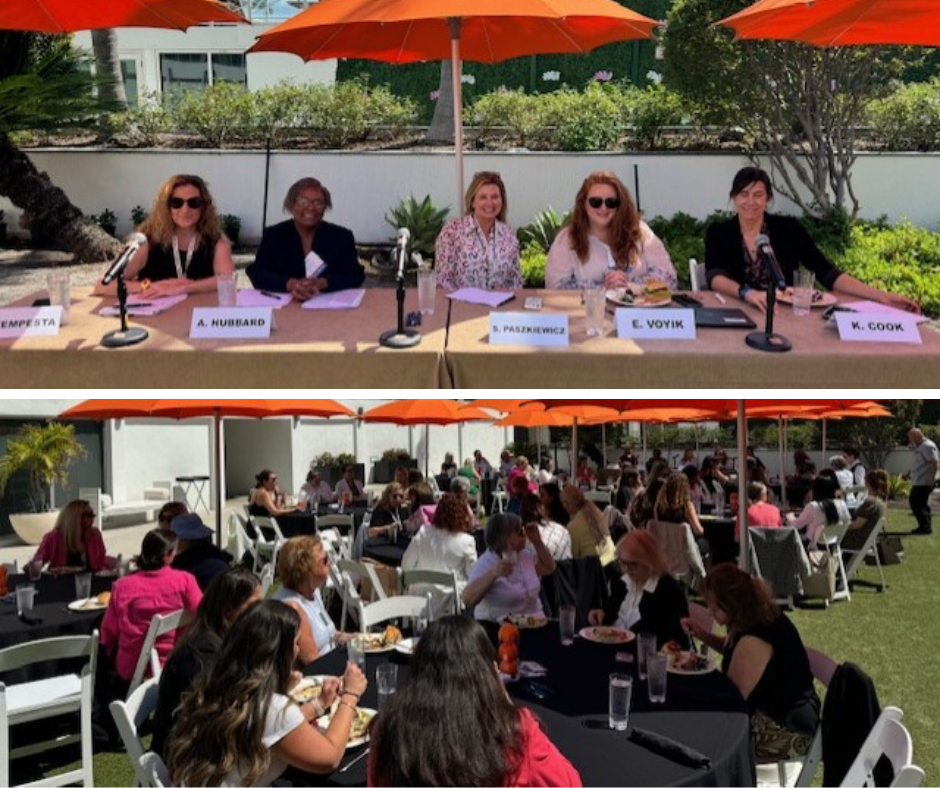 Maron Marvel member Antoinette Hubbard served as a panelist for the Women’s Networking Lunch at Perrin Conferences’ Cutting-Edge Issues in Asbestos Litigation Conference in Miami, FL, on March 12, 2023. Antoinette and fellow industry leaders connected and discussed the unique challenges they face as women in the law.
Maron Marvel member Antoinette Hubbard served as a panelist for the Women’s Networking Lunch at Perrin Conferences’ Cutting-Edge Issues in Asbestos Litigation Conference in Miami, FL, on March 12, 2023. Antoinette and fellow industry leaders connected and discussed the unique challenges they face as women in the law.
The risk of a large verdict has always been a major factor in any litigation. In recent years, the potential for a punitive damages instruction reaching a jury and a consequent verdict has grown as well.
US juries have not hesitated to award extreme compensatory and punitive damages verdicts.
A Selection of Recent Verdicts


The discussion among the 35 attendees at the 2023 Maron Marvel Roundtable in Philadelphia generated shared thoughts and practice pointers worth considering and applying to address the present and evolving risk of large and nuclear verdicts. We noted specific actions that companies and insurers can consider and employ.
These points will be set out in summary fashion and are not meant to be applicable to each case. They are offered in the spirit of the Roundtable and our previous White Paper #1 from the 2023 Philadelphia meeting. These are shared ideas derived from experienced pros.
This paper focuses on the defense side of a case. It would be possible to write a similar paper on plaintiff-side issues. Plaintiff lawyers are adept at managing and presenting significant cases. However, they realize the downside risk of overly optimistic claims and the effect of time on their client and the plaintiff lawyer’s practice. Plaintiff counsel are open to resolution if approached carefully and early. While it is beyond the scope of this paper, a study of mega verdicts may reveal that the high levels of procedural and discovery activity and the fog of litigation can obscure definite early opportunities to resolve a case.
It is a challenging, if not impossible, task to delve into every reason for jury sentiment. While the group at the Roundtable this year touched on the fundamental issue of why juries are acting and reacting the way they are, that analysis is beyond the scope of this White Paper. We do plan to devote considerable attention to this issue at the 2024 Maron Marvel Roundtable in Philadelphia.
Before we go on, it is important to note that some cases must be tried. A defendant may not be able to resolve a matter for a number of reasons. Or by doing so, it would invite more suits or greater risk. The comments offered below are not meant to be fixed rules. Any case, particularly one which has the potential to result in a nuclear verdict, presents an intricate evaluation of risk and the application of a unique strategy.
THOUGHTS TO CONSIDER
1. CLEAR, OBJECTIVE AND FEARLESS ASSESSMENT OF THE CASE
a. Data Use
Not every case with the potential for a large or nuclear verdict can be identified on day one. Case data derived from other matters may be a useful best practice.
Some companies and carriers have data from thousands of prior matters. The careful capture, selection, and application of claims and litigation data has predictive value.
It is advisable to attempt, wherever possible, to assemble and mine the usable universe of company and industry experience on claims. Captured data can identify common characteristics of problem cases such as allegation categories, similarity of factual, medical, and damage evidence, expert use and testimony, jurisdictional history, and comparison to outcomes in precedent cases. Anything that may help pinpoint the risks on a matter can add to the accurate assessment of a case.
b. Objectivity
Be candid about a case from day one. It is critical to objectively identify the potential best-case and worst-case scenarios with candor and as early as possible. While no one wants to be the bearer of bad news, leadership for any defendant needs the clearest picture possible. The C-Suite needs an unvarnished read on the case risk.
Early case assessment is noted repeatedly in all defense counsel guidelines and insurer outside counsel guidelines. Allow the case assessment process to reflect an objective and direct case risk analysis.
Adopt a heightened awareness that engages and fully utilizes the collective wisdom and experience of your litigation team (adjuster, manager, company leadership, resolution, and trial counsel.) As a case is underway, continual, real-time assessment is critical. A thorough and careful evaluation of each material case development is fundamental.
It may be helpful to elevate any assessment and guidance decisions to a particular unit or group within the company or insurer. Many entities have complex claims groups. It may be helpful to consider a similar approach constructed around a potential large verdict/nuclear verdict case team, which has straight-line reporting to leadership.
It was noted by attendees at the Roundtable that in the case of mega and nuclear verdicts, a practice of post-case analysis is of significance. Data capture with a retrospective focus may be of considerable value: study how the case was assessed prior to trial and identify where and how the pre-trial assessment may have been inaccurate. A sports team plans for the next game, but it studies intensively the films of the last game as well.
Similarly, candid study of the actual trial can be a valuable process. An analysis of what occurred in a trial is not just the realm of the appeal lawyers. Like any forensic investigation, there is much to be learned from breaking down the individual components and placing them under the microscope to learn as much as possible for future guidance.
2. JURY TRIAL PREPARATION
a. Jury Trial Lawyers
Law firms have experienced litigators, and they are assets for any client. Litigators are experts in vital functions such as pleading, discovery, motion practice, research, depositions, identification of experts, oral advocacy, and overall case management.
Standard litigation, or even bench trials, while significant and challenging experiences for a lawyer, will not likely provide the unique issues, variability, and hour-to-hour, day-to-day adaptation demand and nuance of a jury trial.
Consider the immediate inclusion of an experienced jury trial lawyer to lead or co-lead any case that holds significant jury risk. Examine how many significant jury trials your lead counsel handled to verdict, including cases with punitive components. It is worth making this staffing a fundamental requirement and investment at the inception of the case.
The components of jury trials are as unique as they are significant. A jury trial requires knowledge of and experience with handling evidence with a jury in mind, pre-trial strategy within a jury environment, jury pool read and selection, and insightful and expert communications with a jury in opening and closing. Examination of plaintiff, corporate, fact, expert, and rebuttal witnesses may be vastly different from a deposition or even a bench trial witness. Decisions on cross-examination before a jury are critical, quick, and with immediate effect.
Trial decisions involving punitive claims before juries may require even more specialized counsel.
Plaintiff lawyers are aware of the other side, and they study how the case is being managed and postured. At trial, they are acutely sensitive to the level of experience of the opposing counsel. When a defense is led by an attorney who has significant jury trial experience (and similar expertise with punitive damages jury trials), it may level the playing field. Or, at a minimum, it may not provide a real or presumed advantage to the plaintiff side.
b. Trial Team Considerations
Corporations and insurers frequently need to utilize a regional or national trial counsel as lead counsel. Sometimes this results in the presence of teams of firms and lawyers for one defendant. Partners, associates and paralegals flowing in and out of a courtroom is not a great optic. It is advisable to keep a matter as simple as possible at the counsel table. This may be impossible in multi-defendant cases, but it is valuable to keep things focused and basic at the counsel table. The jury is watching everything.
Large firms from outside the jurisdiction will frequently work together with a local counsel from the particular jurisdiction. Some counsel from outside the jurisdiction will have the experience to adapt and navigate the courtroom and the jury well. Some may not. An outside lawyer and firm may not be the best fit or, at least, may be perceived by the jury as outsiders. This is particularly significant in a case with a large jury verdict, punitive verdict risk, and an intensely local character.
An experienced local jury trial lawyer would likely understand the local court, judges, and most importantly, the local juries. The courthouse and courtroom may be the main site of that lawyer’s career interaction with juries. Why not use this to a defendant’s advantage?
3. RESOLUTION ORIENTED: SETTLEMENT COUNSEL
While any corporation, insurer, and counsel strive to identify optimal resolution and settlement opportunities during the case, some case profiles cry out for early and persistent attempts at resolution.
The traditional structure of litigation assumes the two lawyers who are on the point – the lead plaintiff and the lead defendant lawyer – will also somehow, someday manage to settle the case. Each side is overcome with the demands of the suit and the duty of zealous advocacy. Focus on a risk management approach frequently takes a back seat.
In any major case, the use of a settlement lawyer by a defendant can lead to a resolution that is timely, favorable, and eliminates downside risk.
A non-litigating settlement counsel’s communication with the opposing side, on behalf of their client, is a confidential settlement communication protected by rule and by law. Settlement counsel, used solely to focus on ending a lawsuit, can be a valuable asset for the defendant.
This role is not a neutral or a mediator. This settlement lawyer is the advocate for their client. Their use allows for a level of communication and dialogue with the opposing side which is free of the constraints and pressures of the litigation.
It is a process separate from the litigation and does not harm the overall defense. This process enhances information flow to the client and allows for informed decision-making on resolution. Stated differently, how many large and nuclear verdicts may have been averted by early settlement attempts and focused resolution discussions through an experienced settlement counsel?
It is not a sign of weakness or lack of resolve to seek opportunities to bring a matter to a close. It is effective when a defense can use an experienced settlement counsel paired with an exceptional jury trial lawyer who is ready to try the case.
4. JURY ANALYSIS/FOCUS GROUPS
Jury consultants and focus groups can be game changers. They can also be expensive and, in some matters, of limited productivity.
Every case does not warrant a survey, focus group, or mock trial. Data from other cases, prior experience of the corporation, insurer, and defense counsel, and an objective assessment of risk can identify those cases that call for an investment in focus groups and mock juries.
Jury trial lawyers and a major case risk management team working with effective consultants can identify and test particular concerns and shape before a focus group. In cases that reflect potential for large verdicts, it is valuable to engage with focus groups and similar exercises as early as possible, utilizing groups from the jurisdiction and with as close to a potential jury pool profile as possible.
Use techniques and lawyers who can present the case in as realistic a fashion as possible. Consider using an actual plaintiff lawyer as the plaintiff lawyer in any exercise. While such a roster addition may be hard to come by, it is not impossible. One flaw may be in using a career defense lawyer to present as the plaintiff lawyer. While they may be up to the task and enjoy doing so, it may not yield the best results.
Having a negative focus group or mock jury outcome is not a bad thing: it is information from which to learn and shape a case.
5. TARGETED MEDIATION
Large risk cases and those with the potential for a punitive damages instruction and award may be addressed through an early mediation process or one that is out of the ordinary.
Also, the mediation commitment in such cases can involve a process of building to a result over time. Earlier attempts with some level of agreement may be used to foster further meetings. There are a few mediators in the country who are experienced in the mega cases. They and their teams understand that some matters are impossible to resolve without multiple sessions and creative thinking.
Experience matters. Both plaintiff and defense firms know those few mediators who can help manage the mega risk case and bring it to a conclusion. While conventional thinking may be that mediation is only effective at the end of a case, it is valuable to consider earlier approaches that may identify the path to a resolution.
6. APPEAL AND LEGISLATION
While beyond the scope of this paper, it was noted that it is helpful for any company or insurer to be current on the status of any appeals and legislative activity on proposed caps and limits.
Such information may have a role at times in the actual case, particularly in resolution attempts and discussions.
Identifying appeal counsel who understands not only the law but a trial that involves a court deciding issues before a jury is added value. Rulings on evidence, for example, may take on an entirely different character when the matter involves what a jury can and cannot see or hear.
For any case, particularly large verdict potential cases, it is advisable to have appeal experts from the jurisdiction in question. Even in Federal cases, local appellate counsel may add significant value.
TAKEAWAYS
Proactive risk mitigation strategies to consider include:
- Informed data-driven insights
- Specialized counsel with jury expertise
- Ongoing and comprehensive case risk evaluations and focus groups
- Proactive settlement counsel initiatives
- Informed appellate advocacy

Maron Marvel is pleased to announce director Shounak “Ruku” S. Sarkar has been selected as a 2024 Leadership Council on Legal Diversity (LCLD) Fellow. In addition, associates Leslie Federer and Gabrielle Morrison were chosen for the 2024 LCLD Pathfinder Program.
The LCLD Fellows Program is an intensive, yearlong professional development course that connects mid-career attorneys of diverse backgrounds with leading general counsel and managing partners. It is designed to give high-potential lawyers the leadership training and tools to propel their careers further. LCLD Fellows have distinguished themselves within their organizations by being deeply engaged, indispensable to key clients and teams, invested in attorney mentoring and professional development, and on a trajectory toward leadership positions.
Created with early-career attorneys in mind, the LCLD Pathfinder Program provides participants with foundational leadership skills, professional networking opportunities, and career development strategies. LCLD Pathfinders will have several opportunities throughout the year to meet and interact with their peers, both in person and in a virtual format. This is in addition to the exclusive leadership and professional development curriculum that is unique to the Pathfinder program.
“The LCLD Fellows and Pathfinder Programs perfectly align with our firm’s DEI values,” says Antoinette Hubbard, Maron Marvel’s DEI director. “Ruku, Leslie, and Gabrielle will represent Maron Marvel well at LCLD. We are excited to see their professional growth over the next year.”
Ruku is a mass and toxic tort attorney defending environmental and general liability claims. He is based in our Wilmington, DE, office.
Leslie focuses her practice on mass tort and general liability matters. She is based in our Chicago, IL, office.
Gabrielle defends clients in the areas of premises liability, personal injury, and mass tort claims. She is based in our Philadelphia, PA, office.
Founded in 2009, LCLD is an organization dedicated to empowering the next generation of diverse legal talent. LCLD members comprise more than 400 managing partners and leading counsel, including Maron Marvel President Catherine Pyune McEldowney, who have pledged to build a more equitable and diverse legal profession.
Maron Marvel associate Gabrielle Morrison spoke at Drexel University’s Thomas R. Kline School of Law’s Accepted Student Day Breakfast. The school’s DEI committee, “DiveIn” sponsored the breakfast. Gabrielle spoke with the students about the benefits of an inclusive mindset and community in law school and the legal industry. She mingled with the students and fielded questions about public speaking, working full-time, and finding opportunities to propel them in their careers.
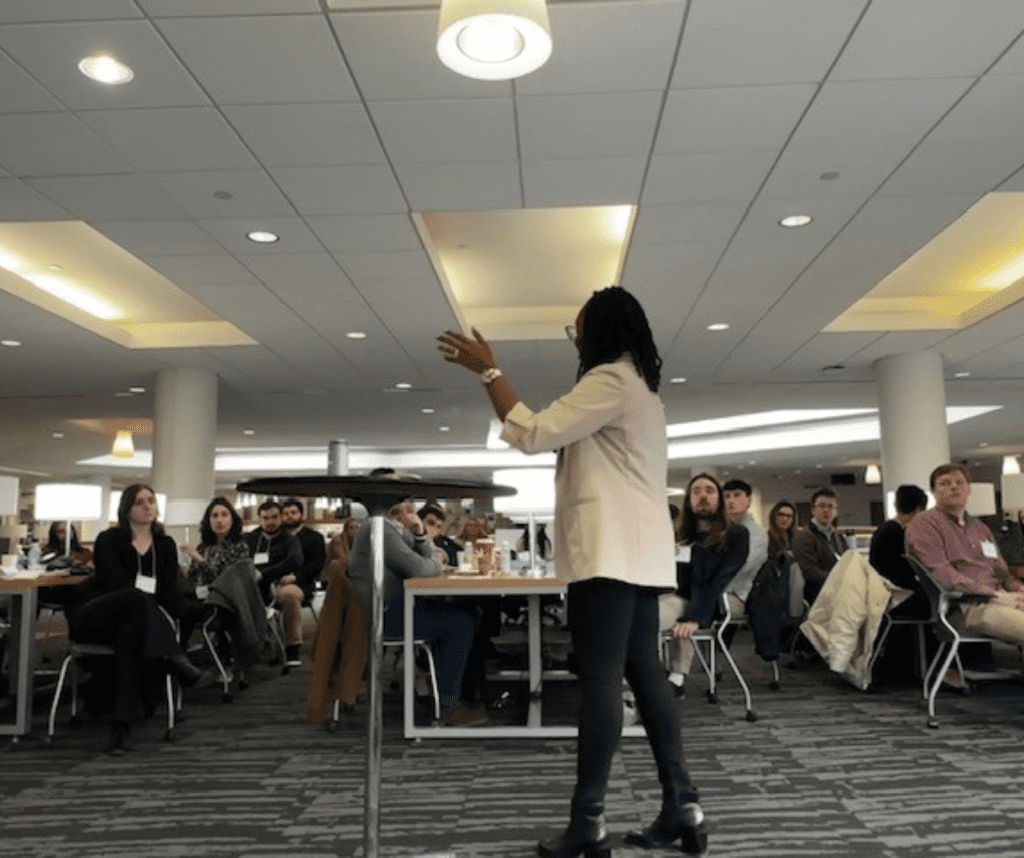
Maron Marvel associate Liana Nobile spoke at NYU’s “Lunch with a Lawyer” event. Hosted by the NYU Preprofessional Advising Center, “Lunch with a Lawyer” allows students to learn more about a career in law through Q&A sessions with lawyers. As a guest speaker, Liana shared her career insights as a defense attorney and offered advice on the transition from a student to a working professional.
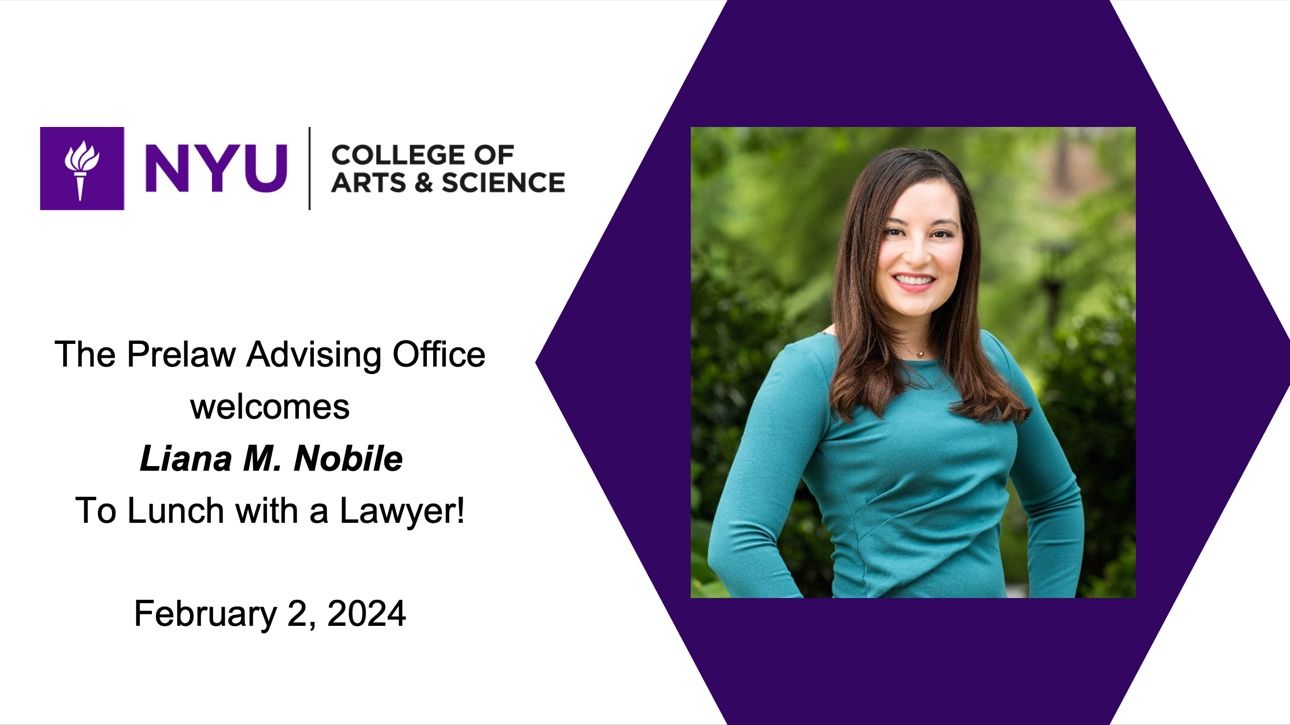
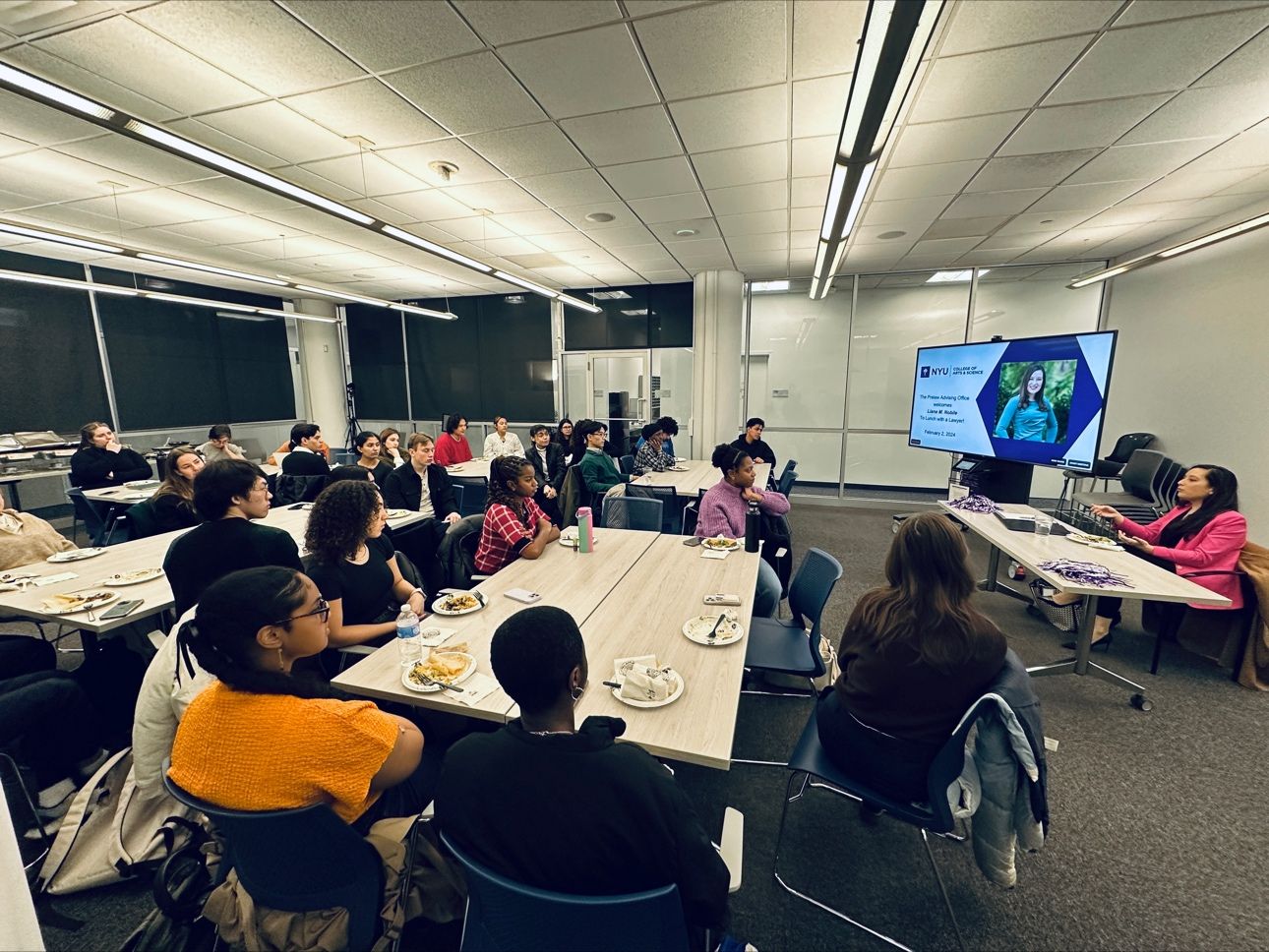
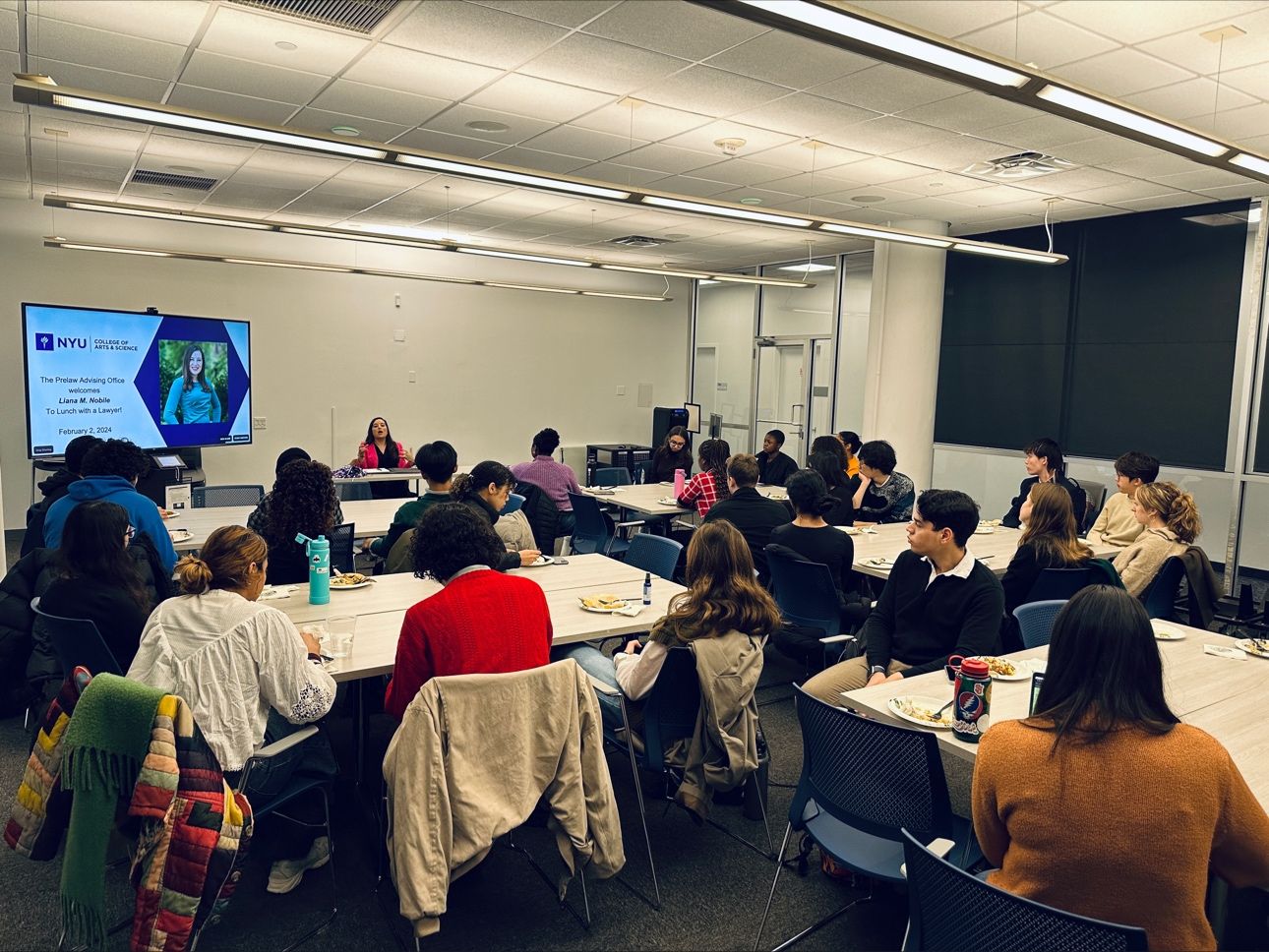
Maron Marvel is pleased to announce six attorneys from our Chicago office have been named to the 2024 Illinois Super Lawyers and Rising Stars lists.
Included in this year’s Super Lawyers list are members Melissa M. Fallah and Adam J. Jagadich.


Additionally, four attorneys were recognized as Rising Star Honorees

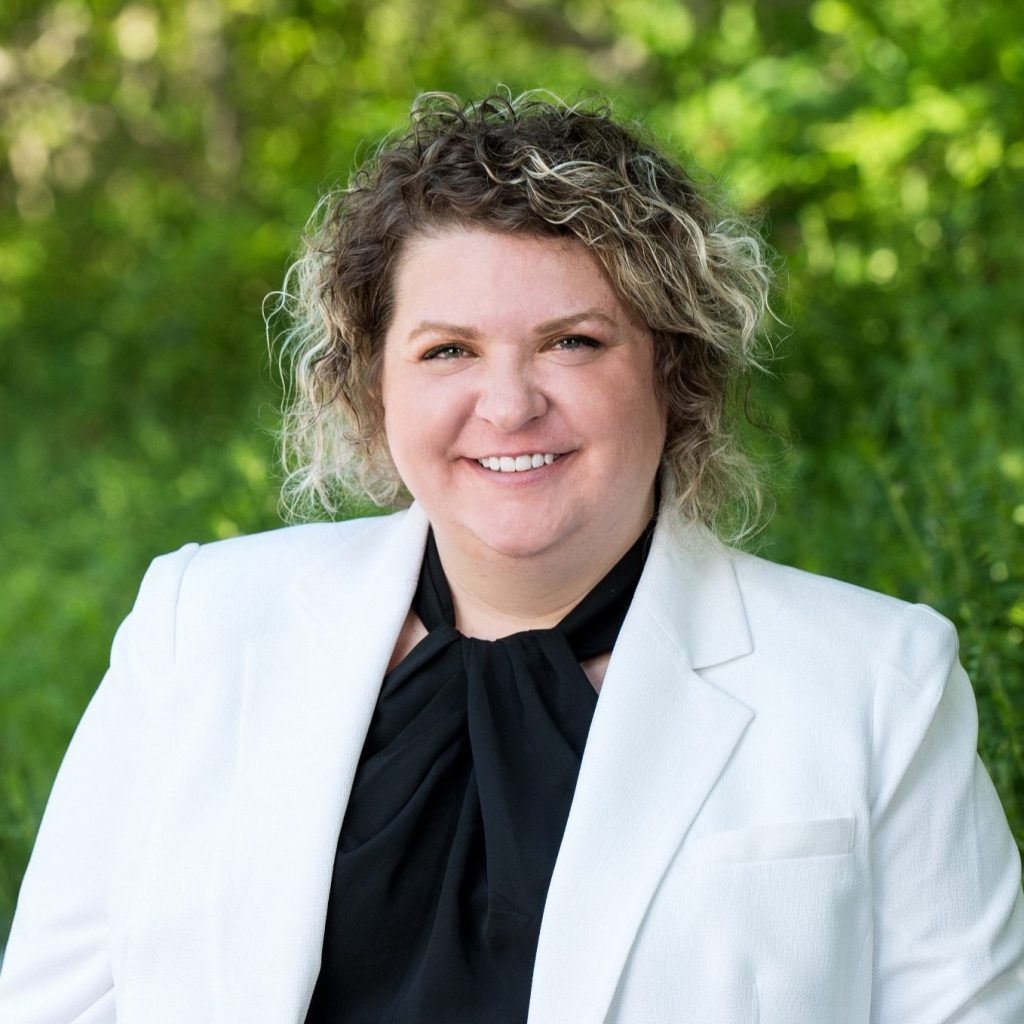


Congratulations to all the firm’s named attorneys on this accomplishment.
Each year, no more than five percent of the lawyers in the state are selected by the research team at Super Lawyers to the Super Lawyers list and no more than 2.5 percent of the lawyers in the state are selected to the Rising Stars list.
Super Lawyers, part of Thomson Reuters, is a rating service of outstanding lawyers from more than 70 practice areas who have attained a high degree of peer recognition and professional achievement. The annual selections are made using a patented multiphase process that includes a statewide survey of lawyers, an independent research evaluation of candidates and peer reviews by practice area. The result is a credible, comprehensive and diverse listing of exceptional attorneys. The Super Lawyers lists are published nationwide in Super Lawyers Magazines and in leading city and regional magazines and newspapers across the country. Super Lawyers Magazines also feature editorial profiles of attorneys who embody excellence in the practice of law. For more information about Super Lawyers, visit SuperLawyers.com.
Maron Marvel is pleased to announce Information Technology Director Gil Pinkett was appointed as a member of the Delaware Commission on Law and Technology (“DCLT”) of the Supreme Court of Delaware. The DCLT is an arm of the Delaware Court that “provides Delaware lawyers guidance and education in the aspects of technology and the practice of law to facilitate compliance with the Delaware Lawyers’ Rules of Professional Conduct.” Gil will serve with the DCLT for a three-year term, aiding in its mission to address the continually expanding use of technology in Delaware legal matters.

The recent decision by the Sixth Circuit in Hardwick and a review of the law from various jurisdictions supports the challenges that Plaintiffs face in proving standing for class certification in PFAS lawsuits. Late in 2023, the U.S. Court of Appeals for the Sixth Circuit struck down class certification for plaintiffs alleging injuries from exposure to per- and polyfluroaylkyl substances (PFAS), known as “forever chemicals.” In Re: E.I. Du Pont de Nemours and Co. C-8 Pers. Inj. Litig., (Hardwick v. 3M Co.), 87 F.4th 315 (6th Cir. 2023).
In Hardwick, the Sixth Circuit addressed an effort by a career firefighter to certify a statewide class action for exposure to PFAS in firefighting foam. At the district court level, suit was filed against 10 alleged PFAS manufacturers following blood tests that showed the named plaintiff had traces of five PFAS compounds in his blood. The district court was asked to certify a nationwide class consisting of every person residing in the United States for one year or more since 1977 with 0.05 ppt or more of PFOA and PFAS in their blood. However, the district court only certified a statewide class of 11.8 million persons subject to Ohio laws.
On appeal, the Sixth Circuit vacated the district court’s class certification and remanded the case with instructions to dismiss the case for lack of jurisdiction linked here. The court held that the plaintiff lacked standing due to the absence of particular allegations that each individual defendant manufactured or provided a traceable pathway for exposure to any of the specific PFAS compounds detected in his system. The court was not impressed by plaintiff’s pleading against the defendants as a collective, and asserting only conclusory allegations that failed to identify which companies manufactured the PFAS compounds to which he was allegedly exposed.
The court’s standing examination considered the elements: 1) had plaintiff suffered an actual injury; 2) traceable to a defendant; and 3) that a court may redress. The court’s review focused on traceability, an element that requires plaintiff’s allegations to demonstrate facts “plausibly supporting an inference that each defendant ‘likely caused’ at least one of those PFAS compounds to end up in his blood.” The court rejected the plaintiff’s collective allegations against all defendants, stating the plaintiff “must tie his injury to each defendant.” Essentially, the court stated that a plaintiff may not sue multiple defendants by making them a collective group in the general allegations when more particular facts may only allow the plaintiff’s claims against specific defendants, not all.
The court’s scrutiny of the plaintiff’s claims in Hardwick is potentially useful not only in the growing glut of PFAS litigation, which seems only likely to expand, but in many claims where a plaintiff alleges exposure to toxic substances, but fails to particularize the substance and its manufacturer, and instead simply asserts claims against an industry group of defendants as a collective. Utilizing standing and applying a similar test to claims as done in Hardwick to combat vague pleadings may be more useful in some jurisdictions than others.
For instance, in Illinois, courts have considered similar arguments when a plaintiff brings a claim against a collective or an industry and fails to particularize its exposure. In Smith v. Eli Lilly & Co., 137 Ill.2d 222, 232, 560 N.E.2d 324 (1990), the Illinois Supreme Court found that: “A fundamental principle of tort law is that the plaintiff has the burden of proving by a preponderance of the evidence that the defendant caused the complained-of harm or injury; mere conjecture or speculation is insufficient proof.” Id. The court stated that while each manufacturer owes a duty to those who will use its product or who might be injured by it, that duty is not so broad as to extend to anyone who uses or might be injured by a like-kind product supplied by another. Smith, 137 Ill.2d at 265, 560 N.E.2d 324, at 343.
Illinois courts have gone on to find that the causation-in-fact element of a cause of action requires a plaintiff to establish a causative link between the tortious acts of a specific defendant and the injuries for which recovery is sought. Thus, the failure to identify to which of the defendants’ products, amongst an industry group of defendants, Plaintiff was actually exposed is grounds for dismissal of a complaint for failure to properly allege causation in fact. Lewis v. Lead Indus. Ass’n, Inc. 342 Ill.App.3d 95 (2003).
Further, in Raja Tr. of Bharti Sona Tr. v. Patel, No. 16 CVS 4472, 2017 WL 1129981 (N.C. Super. Mar. 23, 2017), a North Carolina court granted defendants’ motion to dismiss because the plaintiffs failed to establish standing to sue other members of the LLC. The plaintiffs failed to make “any allegations or advanced any evidence concerning any economic loss or injury that [plaintiffs] may have suffered as a result … including any allegation or proof that Defendants caused [plaintiffs] to suffer injury … .” Instead, the plaintiffs’ allegations were conclusory and non-specific. At best, the plaintiffs alleged the possibility of a future injury, which North Carolina courts have made clear is insufficient to establish a cognizable injury in fact. See, e.g., Pierson v. Buyher, 330 N.C. 182, 186, 409 S.E.2d 903, 906 (1991).
In a Fifth Circuit property dispute case, 920 S. Beach Blvd., LLC v. City of Bay St. Louis, Miss., No. 1:21-CV-263-TBM-RPM, 2023 WL 2749170 (S.D. Miss. Mar. 31, 2023), the court held that the plaintiff had standing against the City because the plaintiff specifically pleads a causal connection between the violation of his rights and the conduct of the City. However, Plaintiff lacked standing against the remaining two defendants because general factual allegations of injury resulting from the defendant’s conduct may satisfy a plaintiff’s burden at the pleadings stage, “traceability nevertheless requires something more than conjecture.” Id., at *9. Similar to the Sixth Circuit ruling in Hardwick, the plaintiff’s allegations in 920 S. Beach Blvd., LLC were mere conjecture.
In a Louisiana data breach case, Bradix v. Advance Stores Co., 226 So. 3d 523, 528-529, 2017 La. App. LEXIS 1496, *6-8, 2017-0166 (La.App. 4 Cir. 08/16/17), the court found that the plaintiff had not established standing because his allegations regarding damages were hypothetical. “Louisiana’s standing requirement … provides that [e]xcept as otherwise provided by law, an action can only be brought by a person having a real and actual interest in what he asserts.‘” Id. at 6. Similar to the allegations in Hardwick, the plaintiff in Bradix brought claims alleging potential damages, which the court deemed insufficient.
However, in the Second Circuit, in Whitfield v. ATC Healthcare Servs., LLC, No. 22CV5005JMALGD, 2023 WL 5417330, at *4 (E.D.N.Y. Aug. 22, 2023), another data breach case, the court found the Plaintiff had established standing stating: “While a plaintiff’s injury must be ‘fairly traceable’ to a defendant’s actions, the causal connection element of standing creates ‘a standard lower than that of proximate causation.’ Quoting Carter v. HealthPort Tech., LLC, 822 F.3d 47, 55 (2d Cir. 2016). ‘A defendant’s conduct that injures a plaintiff but does so only indirectly, after intervening conduct by another person, may suffice for Article III standing.’” Id. at 55–56. Further, in a state court decision addressing a class action complaint for medical monitoring damages for alleged PFAS exposures, a New York appellate court upheld certification of a class of residential property owners with property near a manufacturing facility. Burdick v. Tonoga, Inc., 112 N.Y.S.3d 342 (N.Y. App. Div. 2019). Notably, neither standing nor traceability was addressed.
In the Third Circuit, in Salas v. Acuity-CHS, LLC, No. CV 22-317-RGA, 2023 WL 2710180, at *6 (D. Del. Mar. 30, 2023), another data breach case, the court found Plaintiff had satisfied the standing requirement at the motion to dismiss stage: “Although the traceability requirement ‘does not mean that plaintiffs must show to a scientific certainty that defendant’s [actions], and defendant’s [actions] alone, caused the precise harm suffered by plaintiffs,’ [citation omitted], plaintiffs must nevertheless show that their injuries ‘relate directly’ to the defendant’s conduct. See Id.” In Long v. Se. Pennsylvania Transportation Auth., 903 F.3d 312, 322 (3d Cir. 2018), a Fair Credit Reporting Act case, the Third Circuit noted that in addressing standing, “the injury-in-fact element is not Mount Everest. The contours of the … requirement, while not precisely defined, are very generous, requiring only that claimant allege some specific, identifiable trifle of injury.’’ [citation omitted].
The standing requirement for proving PFAS and other chemical exposure class certification lawsuits is certainly an issue that will continue to be litigated, and the Hardwick decision adds to defendants’ arguments particularly as to traceability of exposures.
About The Blog
Our environmental law and toxic tort attorneys will provide you with news, legal updates, and commentary on environmental and toxic tort liability issues. We hope you find our content informative and helpful as you deal with the ever-changing challenges toxic tort and environmental matters pose to your organization. To receive updates directly to your inbox, click here.
Disclaimer: The information contained in this publication should not be considered legal advice, is not a substitute for legal counsel, and should not be relied on as such. In some jurisdictions, this is considered advertising. For legal advice or answers to specific questions, please contact one of our attorneys.
Maron Marvel senior counsel Robert W. Petti will be presenting “Forecast for PFAS Litigation in 2024” at Perrin Conferences’ PFAS Litigation and Regulatory Developments Conference. This virtual conference will be held on Thursday, February 15, 2024.
The panel discussion will cover:
- Consumer-facing/ESG trend for PFAS
- Forensics analysis of PFAS for source identification
- MDL Litigation forecast
- Current states litigation forecast
- Striking Similarities between PFAS and early asbestos litigation
Other conference topics include current litigation and MDL status updates, federal and state PFAS developments, PFAS consumer fraud, and claims unique to PFAS litigation. To view further details and register, click here.